By IAN FAILES
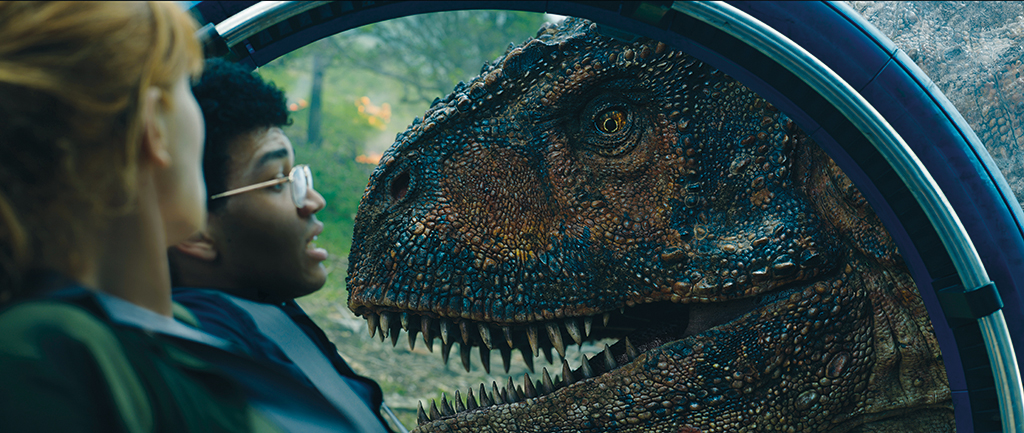
By IAN FAILES

Blockbuster films are often described as rollercoaster rides, but J.A. Bayona’s Jurassic World: Fallen Kingdom contains a literal rollercoaster scene. Claire and Franklin, played by Bryce Dallas Howard and Justice Smith, must escape the erupting Isla Nublar while inside a gyrosphere, narrowly avoiding consumption by a dinosaur, only to launch off a cliff into the sea below before being rescued by Chris Pratt’s Owen Grady.
VFX Voice finds out from Industrial Light & Magic Visual Effects Supervisor David Vickery, who shared duties with fellow Supervisor Alex Wuttke, how this Fallen Kingdom sequence came together via a carefully constructed gyrosphere set piece, an actual rollercoaster-like track, an elaborate underwater set, CG dinos and an exploding volcano.
Plate photography for the on-land gyrosphere moments were filmed in Hawaii, and followed storyboards and previs devised by Proof. The filmmakers aimed to acquire as much practical imagery as possible, and that resulted in the construction of several gyrosphere rigs, including a motion-controlled version that existed on the back of a truck on a pole arm.
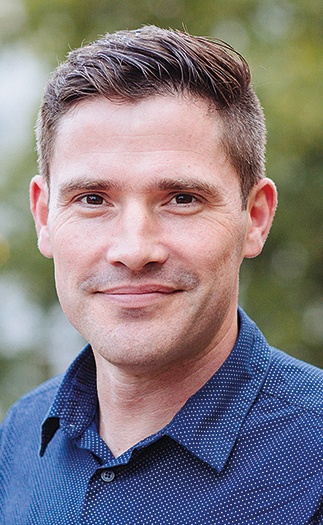
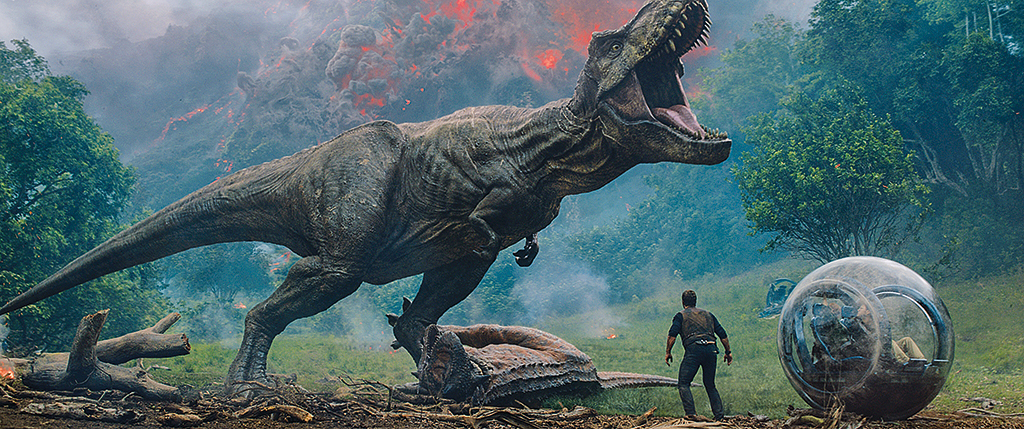
“It had three different axes of freedom of movement,” explains Vickery. “We could program these moves so that, if it was being hit by a T. Rex tail or a Sinoceratops head, the arm could swing and the gyrosphere could rotate and roll. We’d strap in Bryce and Justice and roll them over and upside down.”
Shots of the gyrosphere traveling along were achieved with the set piece on a ‘biscuit rig’ towed by a vehicle that could drive at 15 mph. “One thing I really enjoyed about this was that we didn’t have [the gyrosphere] going super smooth – it was bouncing up and down all over the terrain,” says Vickery. “There was still a lot of work to paint out that rig, and then we needed to add the glass and use our Lidar scan and HDRIs to put in reflections. But what we got was our actors in absolutely correct lighting, a camera that was forced to work to get the shots, and for it to not feel like it was a completely detached, clean, smooth CG shot.”
The gyrosphere navigates past several dinosaurs and flaming lava rocks that have been shot out of the volcano. ILM manipulated Hawaii plate photography to add in an erupting mountain with clouds of smoke and explosions, care of the studio’s proprietary Plume toolset. Special Effects Supervisor (U.S. Photography) Mike Meinardus laid down 30 to 40 pyro pots that could be triggered to explode along the gyrosphere’s path, along with smoke tubes and some fire bars. ILM would then add in digital lava bombs and match the practical explosions with CG ones.
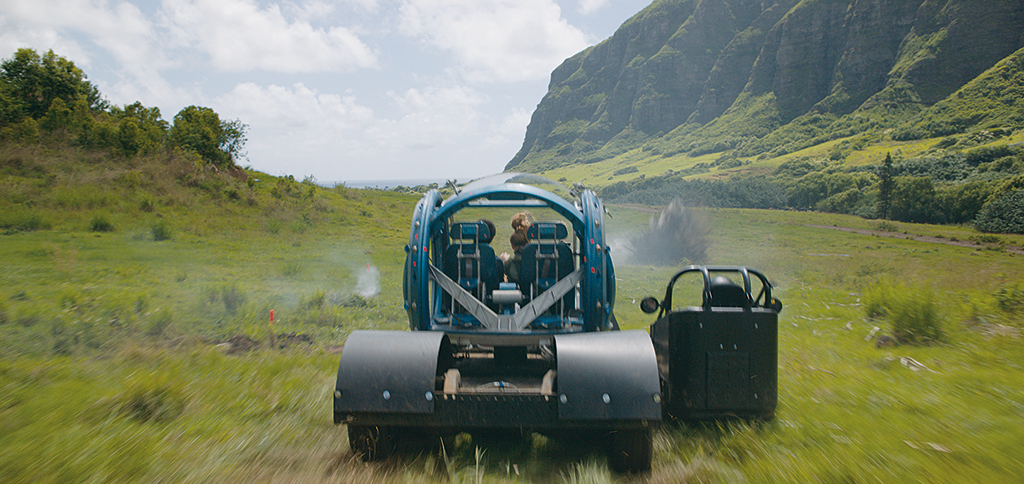
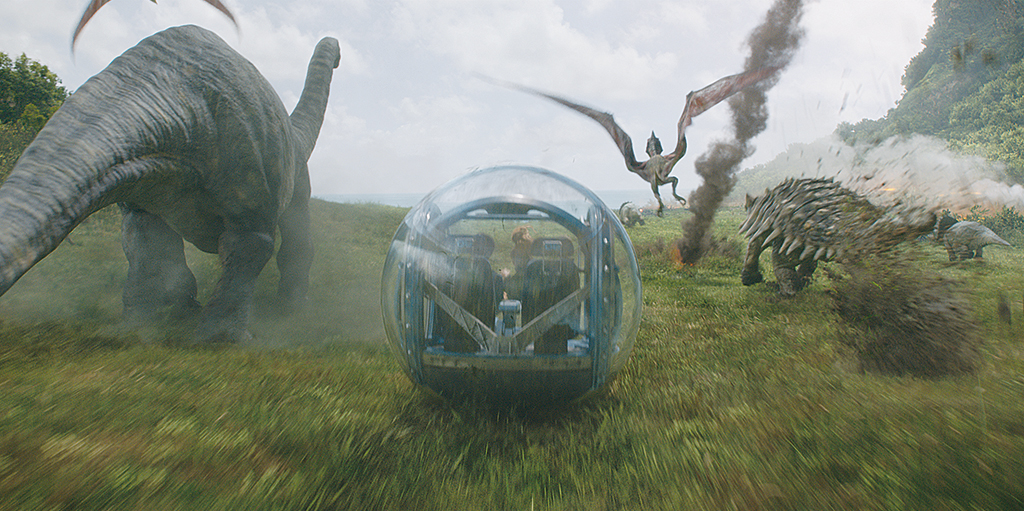
“One thing I really enjoyed about this was that we didn’t have [the gyrosphere] going super smooth – it was bouncing up and down all over the terrain. There was still a lot of work to paint out that rig, and then we needed to add the glass and use our Lidar scan and HDRIs to put in reflections.”
—David Vickery, Visual Effects Supervisor, Industrial Light & Magic
After an encounter with a Carnotaurus (and a T. Rex savior), the gyrosphere continues on its path to the cliff face. To get the right kind of reaction from the actors as the object launches into the sea, Production Special Effects Supervisor Paul Corbould built a section of rollercoaster track for a partial gyrosphere to slide down. A digital half of the shot was also required to fill out the sphere and surrounding environment. For shots of the characters now underwater, another elaborate practical build enabled the gyrosphere to be submerged – with the actors – in a tank.
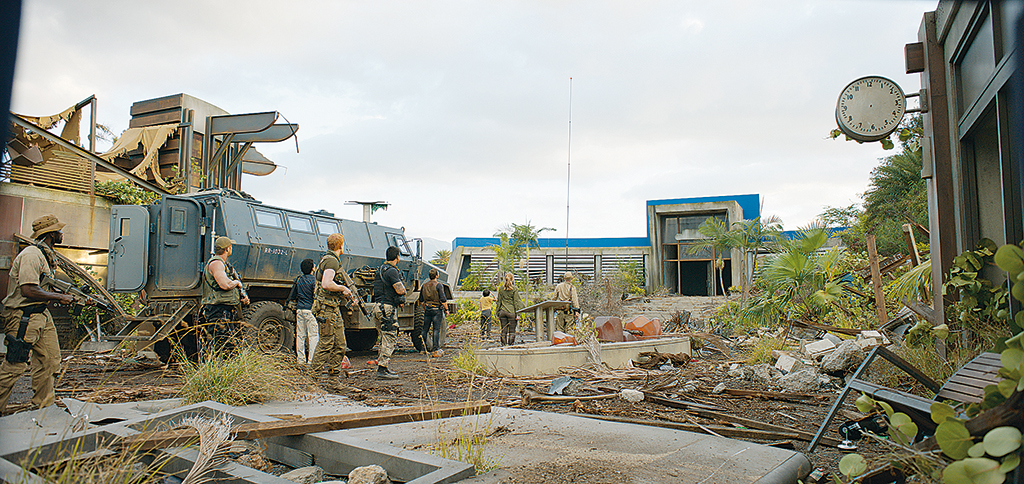
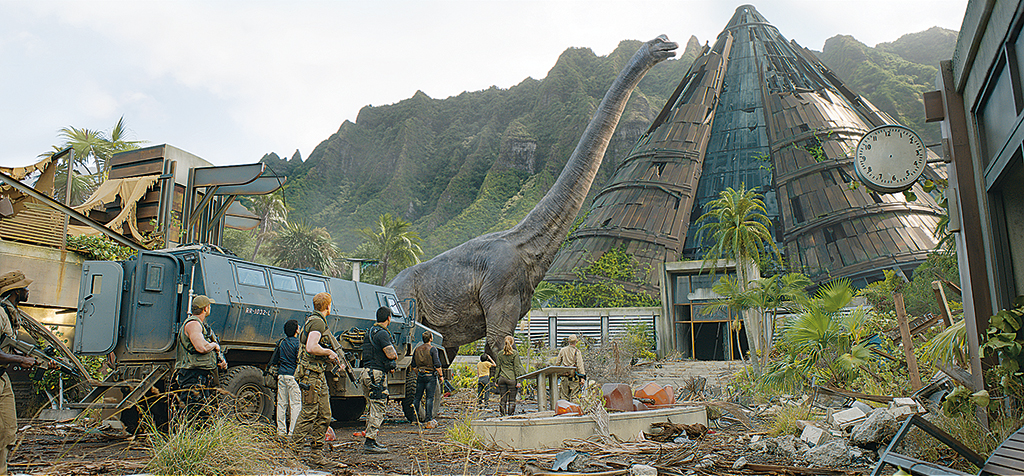
“We thought,” recalls Vickery, “‘How can we try and shoot this in as coherent an environment as possible, without ending up with an element of Chris in a tank and an element of Justice and Bryce underwater in a gyrosphere or on a bluescreen in a dry-for-wet environment?’ Paul Corbould built a fully watertight gyrosphere that we submersed under the water.”
The underwater rig had some unique features. The gyrosphere itself – which featured a specially blown glass dome – was 10% larger than it would’ve otherwise been, which let the camera and the camera operators have more space. It could also rotate to deal with different camera moves and it could be flooded with water via vents.
For the visual effects team, there were a number of major challenges for the underwater shots. These included adding the environment outside the gyrosphere, drowning dinosaurs and lava bombs, and cracks and fissures that appear in the glass (inside and directly outside the sphere, it was all practical water). Also, part of the sequence appears to happen as an uncut ‘oner’. However, it was actually filmed in five separate pieces and then stitched together. The director himself suggested one way to blend plates was to use a ‘water wipe’ device.
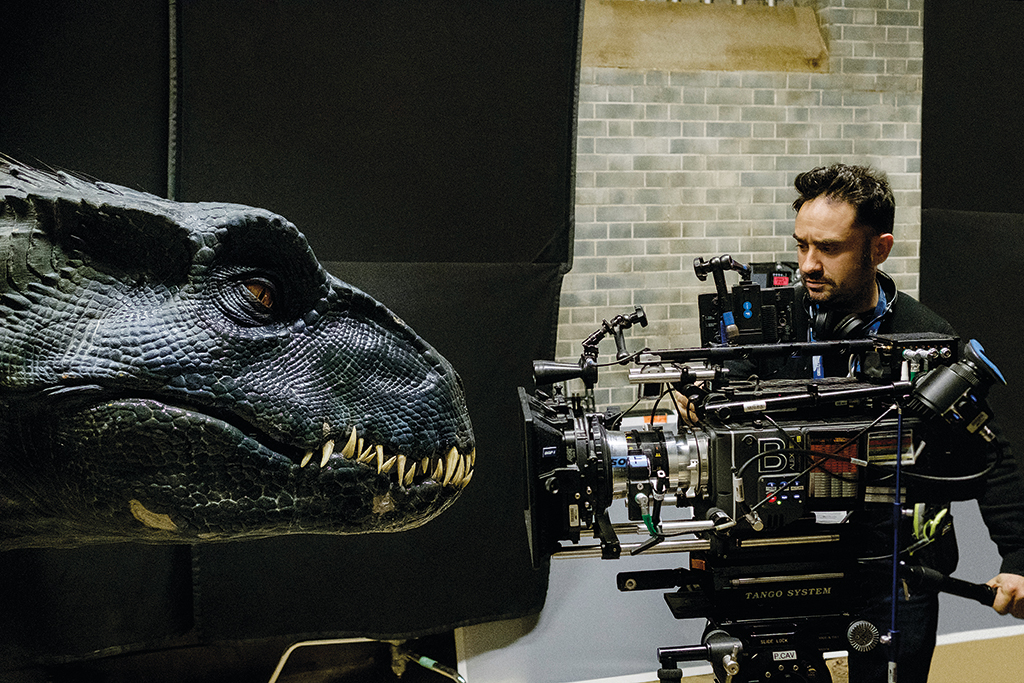
“We thought, ‘How can we try and shoot this in as coherent an environment as possible, without ending up with an element of Chris in a tank and an element of Justice and Bryce underwater in a gyrosphere or on a bluescreen in a dry-for-wet environment?’ Paul Corbould built a fully watertight gyrosphere that we submersed under the water.”
—David Vickery, Visual Effects Supervisor, Industrial Light & Magic
“We often used the device where we might pan off into the water above, and that’s an opportunity to cut because it’s basically a digital frame at that point,” outlines Vickery. “But even then, we would try to bring in elements like Claire’s arm when it reaches up to the top of the gyrosphere. That beat is digital, but that was to try to maintain a visual connection with the actors.
“One of the things that J.A. was incredibly keen on doing was making sure we could get as much physical stuff in there on that day [of shooting as we could],” reflects Vickery on the entire sequence. “It was all about as much practical gyrosphere, as much practical tree, landscape and environment, and underwater shots [as possible]. I feel like we really achieved that.”